For men, wearable flowers are almost exclusively reserved for boutonnieres. But, as different varieties of flowers have different meanings behind them, it’s essential to know what these meanings are when you decide to wear a boutonniere (or when you give a bouquet of flowers as a gift). So today, we’ll dive deep into popular flowers, and the “true meanings” behind them!
Flower Meanings: Ancient History Through the Victorian Age
Flower varieties have been associated with different meanings ever since mankind began to document itself. The ancient Egyptians, Greeks, Romans, and Chinese all had documentation for the meanings behind flowers. William Shakespeare made no fewer than 200 references to flowers and their meanings in his various works. The most famous is likely a quote from Romeo and Juliet, where Juliet is quoted as saying, “What’s in a name? That which we call a rose by any other name would smell as sweet.”
While flower meaning and symbolism do go back all the way into the ancient world, it was the Victorians who took flower meanings to a whole new level. Flowers came to take on the role of communicating thoughts and sentiments that couldn’t be expressed out loud, and many (if not most homes) had books that were reference guides as to what the meanings of different flowers were.

At this time, flowers took on especially unique and narrow meanings, such as striped carnations signaling refusal or spring crocuses representing youthful gladness. So, while it’s clear that well-to-do Victorians had somewhat limited hobbies, flowers do still have meanings today, even if they aren’t quite as loaded as they were in the past.
Boutonniere Flowers and Their True Meanings
As a side note here, before we continue, the meanings behind different flowers may vary based upon region depending on where you are in the world. So, it’s always best to check what the true meanings behind a flower may be before you wear it in a given region, as flowers may represent anything as diverse as celebrations, political parties or movements, milestones, and so on.
1. Edelweiss
The edelweiss is a famous wildflower that only grows in the rocky limestone mountains of Austria, Switzerland, and Germany, between elevations of 5,000-10,000 feet (1,500-3,000 meters). The edelweiss has a long and symbolic history in Europe, and it’s still featured on many things like coins and coats of arms in various European countries.
It’s also been used as a symbol by various political groups, military units, brands, alpine clubs, and even the Swiss Department of Tourism. Furthermore, it was also used as a symbol by both anti-Nazi youth groups and German mountain and airborne divisions during World War II.

After the war, the edelweiss was embedded in American popular culture with a song of the same name in the musical The Sound of Music. In the said musical, it symbolized Captain von Trapp’s patriotism and a rejection of the Nazi annexation of Austria.
Today, the edelweiss has endured as a representation of courage and devotion, making it a favorite choice to be worn at weddings. But, due to its relatively subtle look, it pairs well with multiple different varieties of jackets and other combinations in menswear. The flower has velvety petals and a flat profile, which make it ideal for a boutonniere.
Famous wearers of the edelweiss would include the Duke of Windsor, Prince Charles, John F. Kennedy, Douglas Fairbanks, and Fred Astaire.
You can take a look at the edelweiss boutonniere we offer in the Fort Belvedere shop and keep in mind that it’s one of our most popular sellers for a reason. It looks truly authentic, and it’s a piece that Raphael gets frequent compliments on.
2. Cornflower
The cornflower is an endangered wildflower that’s native to Europe. Its distinctive and beautiful shade of a pale indigo color is often called by the flower’s name, “cornflower blue.”
As you might have guessed, the flower got this name because it was often found growing in and amongst cornfields. Cornflowers have had symbolic meaning for centuries–going as far back as Ancient Egypt, where they were found in a woven garland around the neck of the mummified pharaoh Tutankhamun.

Historically, cornflowers were worn by young men in love, and it was said that if the cornflower wilted or faded quickly that the young man’s love would not be returned.
Today though, the cornflower represents wealth, prosperity, fortune, and friendship. Other meanings include hope, remembrance, devotion, delicacy, anticipation, unity, fertility, and love depending on the context. It’s also associated with the 1918 Armistice in France. So, there, it’s worn in a similar fashion to how the poppy (the last flower in today’s list) is worn in other countries.

The cornflower was a favorite of John F. Kennedy, and it’s also a favorite for Prince Charles, who still wears one regularly. The rich color of this flower makes it well suited to everything from business attire and cocktail attire to tweed sport coats worn with odd trousers.
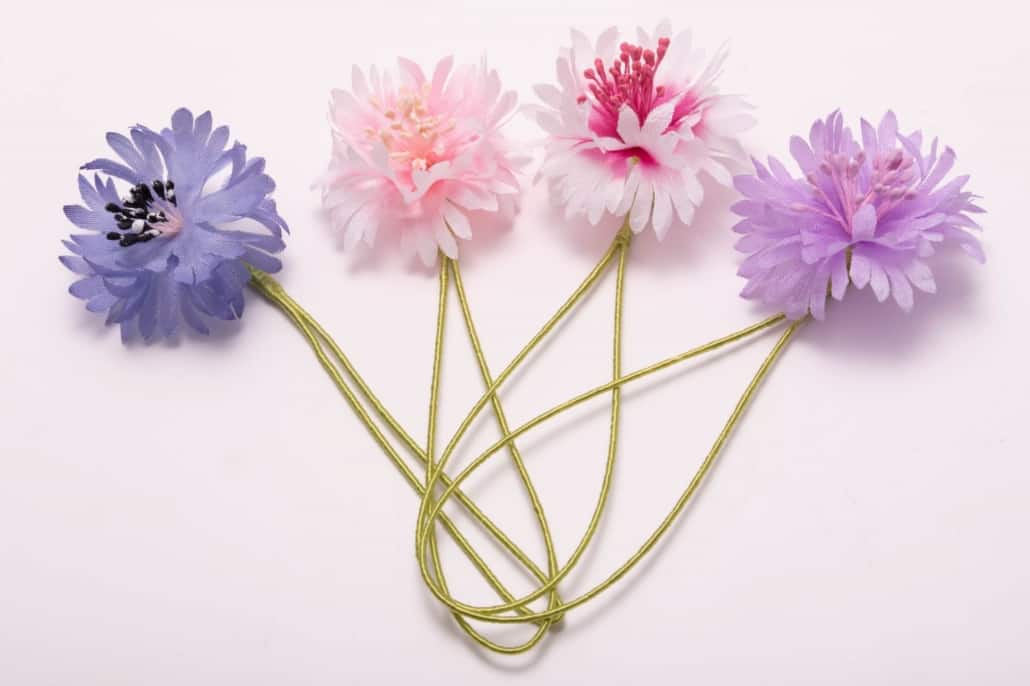
Fort Belvedere offers cornflowers in the classic blue hue as well as in three other colorways.
3. Carnation
Next up, we’ll cover one of the most popular and quintessential boutonniere flowers, the carnation. As humans have cultivated this flower for over 2,000 years, it’s not entirely clear where it originated. With that said, though, wild carnations can still be found growing in parts of Southern and Eastern Europe.
The carnation is one of the most well-known, symbolic, and popular boutonniere flowers to exist, alongside the rose. With various associations all around the world, the symbolic meanings of the carnation are frankly too numerous to list here.
In general, carnations most often represent love, fascination, and distinction. With that said, though, each color of carnation can have its specific meaning.
For example, pale red is for admiration, dark red for love and affection, white carnations represent pure love and good luck, purple indicates capriciousness, pink symbolizes gratitude, and yellow symbolizes disappointment or rejection.

Green carnations, meanwhile, have their own special history. They’re commonly worn on Saint Patrick’s Day and also associated frequently with the Irish writer Oscar Wilde. Perhaps because of this association, they also became a symbol of homosexuality in the early 20th century, though this specific meaning hasn’t persisted as much.
As mentioned, carnations are one of the most famous boutonniere styles and have been sported by many of the most debonair men of all time. Carnations were a favorite for Fred Astaire in white for both Black Tie and White Tie ensembles. They’re also a style staple for the James Bond character, being worn by both Daniel Craig and Sean Connery in dinner jacket outfits. Prince Charles wears carnations in both small and large sizes and in multiple colors. Though, he’s especially partial to miniature magenta carnations.
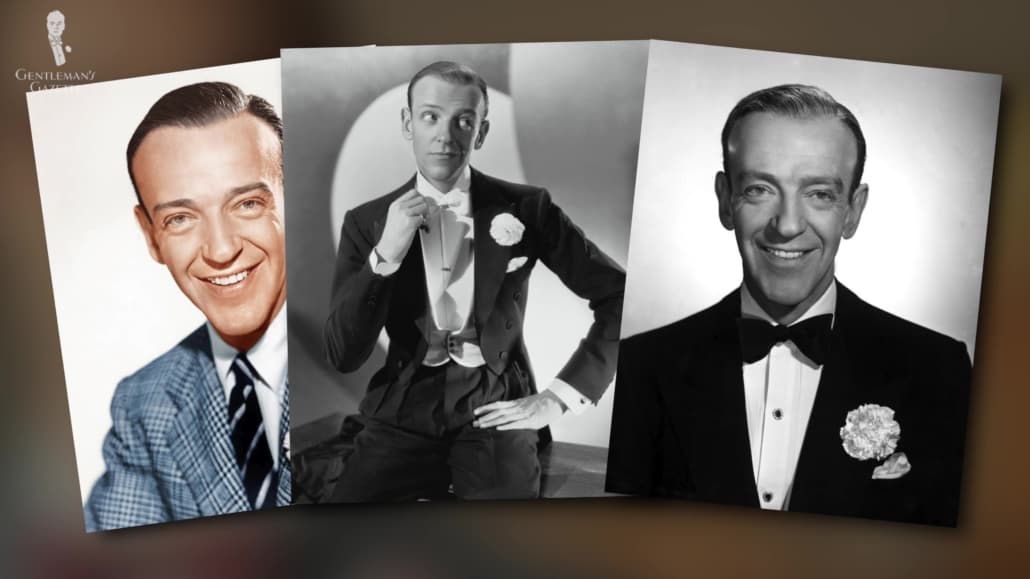
We’ve got a wide range of carnation boutonnieres in the Fort Belvedere shop. They come in two sizes, small and large, and in five different colorways. If you’re just getting started with them, we might recommend a life-size red carnation for Black Tie ensembles, but we’d encourage you to experiment with carnations as they are especially versatile.
4. Rose
Next up, likely the most famous flower of all, the rose. The term “rose” actually applies to more than 300 different species of flower. This ubiquitous flower has a long cultural history and many different civilizations and groups, like the Ancient Romans and Greeks, and early Christian societies, adopted rose-related symbolism. Of course, the rose is the long-standing symbol of love and passion.
Like the carnation, different colors of roses can have different meanings as well. Red roses stand for love, passion, and romance; pink for grace, gratitude, joy, and admiration; orange for enthusiasm and passion; yellow for friendship; and white for purity, innocence, and youthfulness.
With that said, though, the traditional long-stemmed rose has a substantial bloom that is usually too large, heavy, and tall to serve well as a boutonniere. Also, the petals don’t really open outward much, so they can’t be seen well by other people.
This also explains why you’ve likely seen your fair share of oversized, drooping rose boutonnieres at weddings and proms. They’re simply too big most of the time. That’s why at Fort Belvedere, we opted to produce spray roses, which are shorter, wider blooms whose petals open wide for everyone to see.

Alongside a red carnation, a red spray rose is also a classic choice as a Black Tie boutonniere, but it can also work equally well for business suits and even tweed jackets.
At Fort Belvedere, we carry spray roses in six different boutonniere options. Velvet red is great for evening attire and other formal events. Regular red is useful for evenings, but it’s also versatile for day wear. White and ivory are all-season and all-occasion. And peach and orange are excellent for summer garden parties and weddings.
5. Poppy
Finally, today, we’ll discuss the poppy. While this flower also has a long and symbolic history with mankind, its meaning is much more somber than the other flowers we’ve discussed. Poppies have long served as symbols for sleep, peace, and death.
The Ancient Greeks and Romans used them as offerings to the dead. And even further back in history, the Ancient Sumerians used them to extract their opium. Given that opium is a sedative, this may be where the association between poppies and sleep originated.

Today, one of the most powerful associations that the poppy carries though is with the Remembrance Day holiday on November 11th, celebrated by many countries around the world, and it commemorates those who have died in war (The analogous holiday in the United States is Memorial Day on May 31st, though the poppy is a somewhat less common symbol in America). As wild poppies sprout quickly in recently disturbed ground, they grew rapidly in the battlefields and graveyards of World War I and thus, came to be associated with commemorating the dead from that horrific conflict.
And on Remembrance Day, in various countries around the world, poppy boutonnieres or lapel pins are commonly worn.
Oftentimes, these faux poppies can look especially artificial, but we at Fort Belvedere offer poppies that are much more realistic in design, though they will still last much longer than a natural bloom.
Out of respect for the true meaning that this flower carries, it shouldn’t be worn for light-hearted or celebratory occasions. And even for funerals, it’s probably best to check with local customs first.
Conclusion
For most men, these five boutonniere styles are the top choices and they’ll work well for a wide range of occasions. They’re all definitely classic options, and they’re sure to make you look as though you’ve put in an extra amount of effort, which of course you have.
With that said, though, in the Fort Belvedere shop, we carry many other boutonniere options, including geraniums, lotuses, cherry blossoms, buttercups, forget-me-nots, marguerites, hydrangeas, dahlias, daisies, sweet William, phlox, and more.
This unusual array of unique flower options will help you to find the right one for your particular ensemble. And, if you choose one of the more popular options, you’ll also be armed with the knowledge of the various storied meanings behind those flower types.
Outfit Rundown
My overall color palette is working in blues and greens but I’m, of course, wearing accents in shades of pink. Perhaps the most notable would be my white and magenta cornflower boutonniere, which is one of the several options we offer at Fort Belvedere.
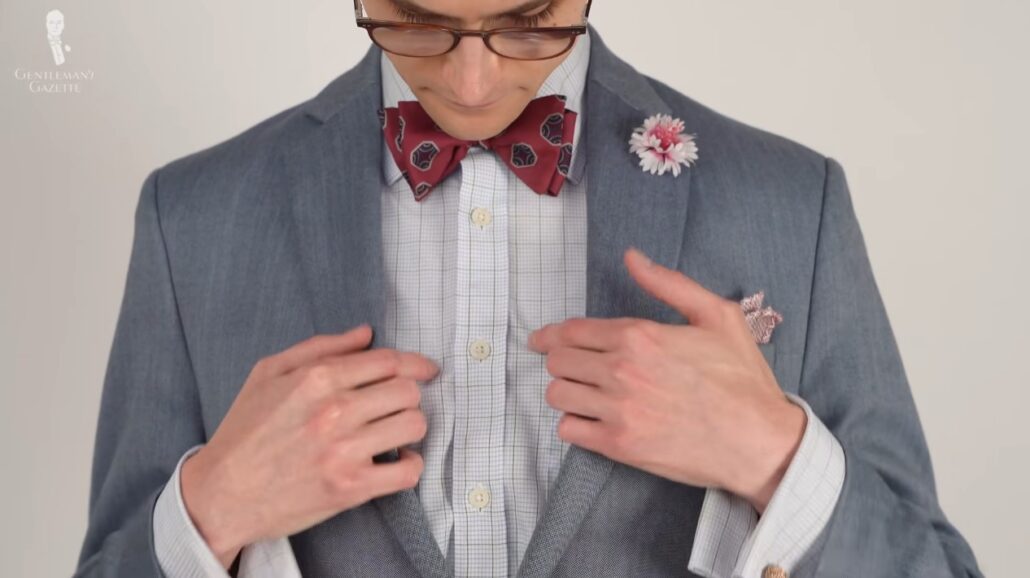
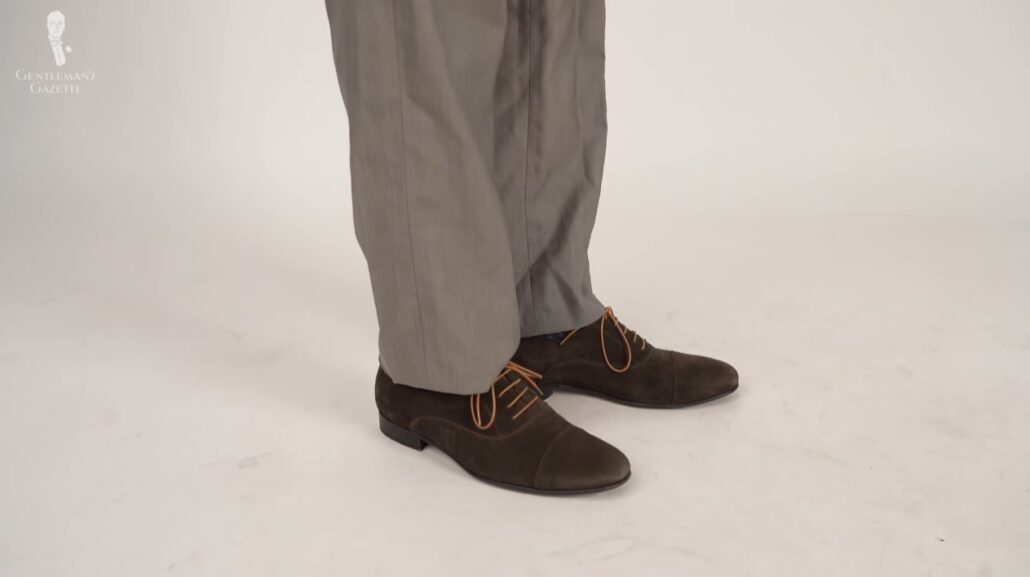
I’ve paired this boutonniere with a vintage bow tie in magenta madder silk featuring a relatively bold geometric pattern and a handcrafted linen pocket square also from Fort Belvedere in burgundy red and white featuring a hand-rolled white x-stitch. My sport coat, which has a bit of a teal tone to it, is in a bird’s eye weave and also has contrasting buttons, and I’m wearing it over a shirt featuring a check pattern of light blue and green on a white ground. My trousers are in a taupe color and my shoes are chocolate brown suede cap-toed Oxfords made on the Undandy website.
Other Fort Belvedere accessories in my outfit today include light brown shoelaces, which I’ve put into the shoes shadow-striped socks in gray and Prussian blue, and my cufflinks, which are in a monkey’s fist knot design and a rose gold color to echo some of the warmer tones in the other pink colored accessories. You can find the various Fort Belvedere accessories I’m wearing in the Fort Belvedere shop, as well as of course a wide variety of different boutonniere options as we already mentioned.
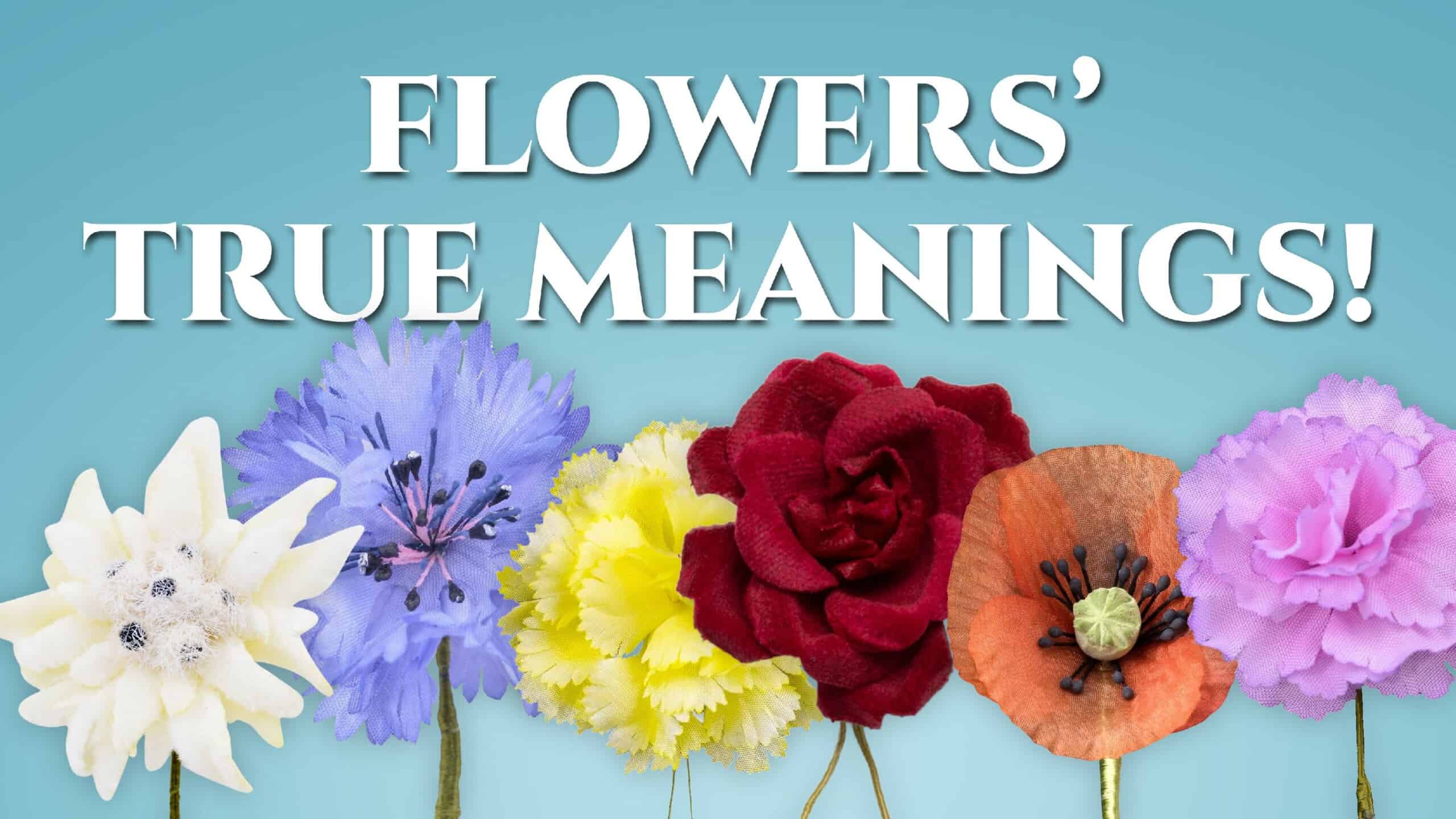


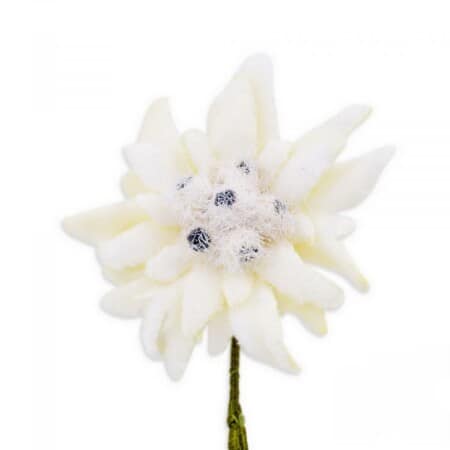
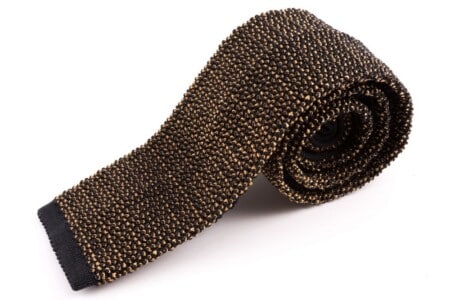
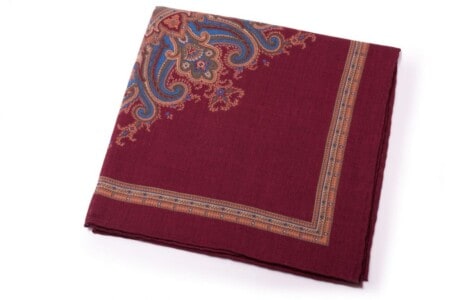
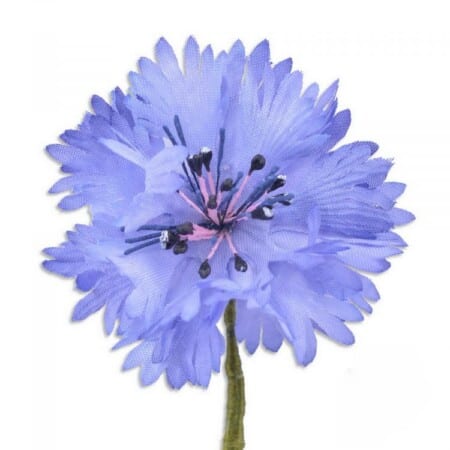


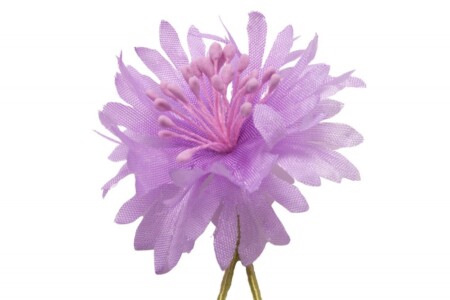
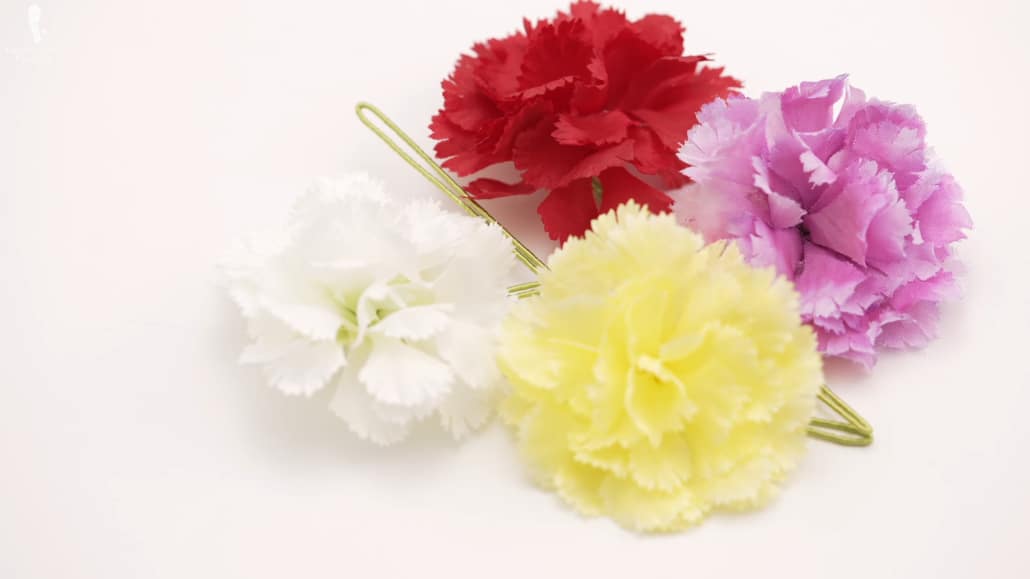
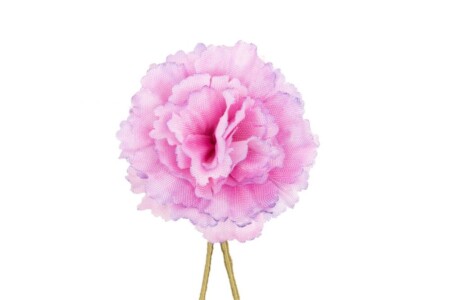
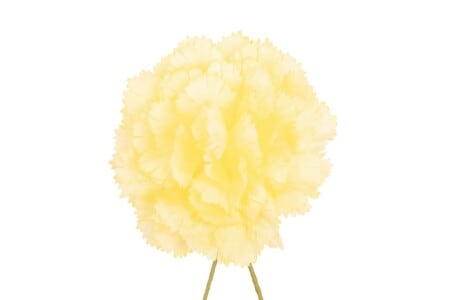

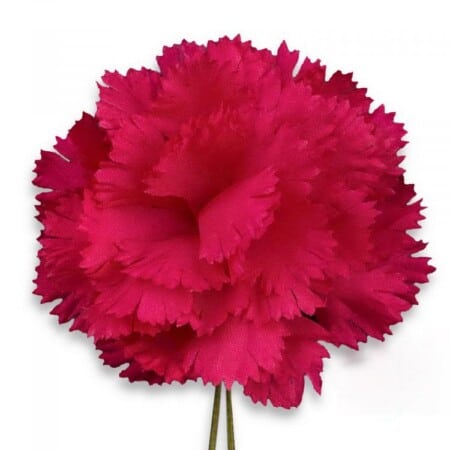



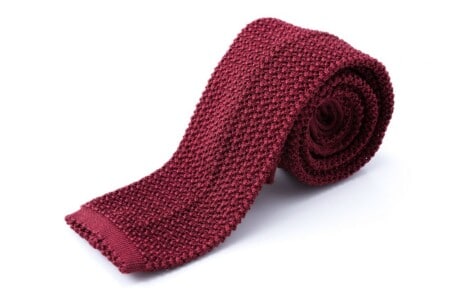


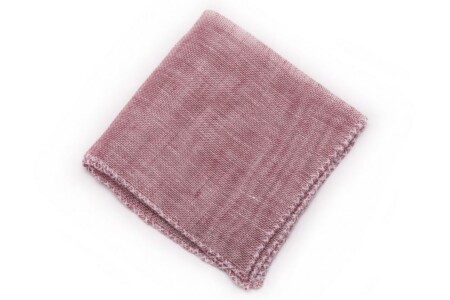
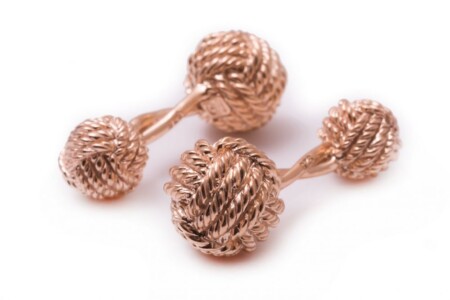
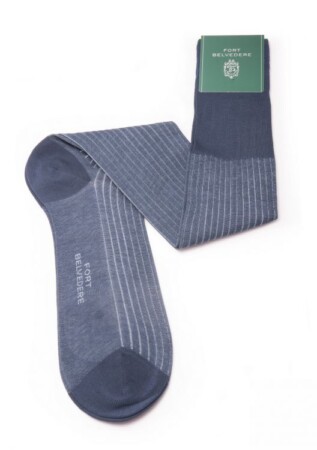
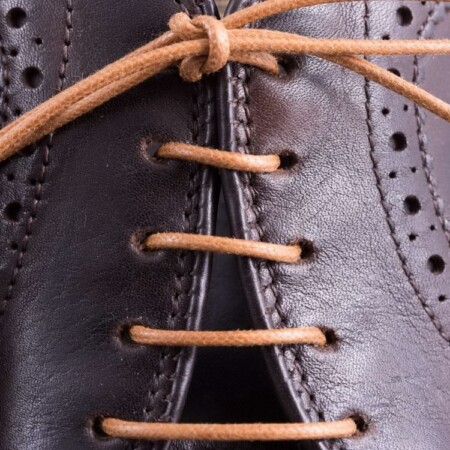
I wear a Venus Flytrap boutonniere, which symbolizes bad luck for small flying insects.
One of my friends has an ex who’s a small flying insect except he’s large.
I wonder if she wore a Venus Fly Trap corsage …
I purchased the edelweiss from Fort Belvedere a few years ago. Pre-COVID, when I was wearing suits, I would wear it often. I’ve also been known to wear it in Switzerland where I received many double-takes. Definitely a conversation starter.